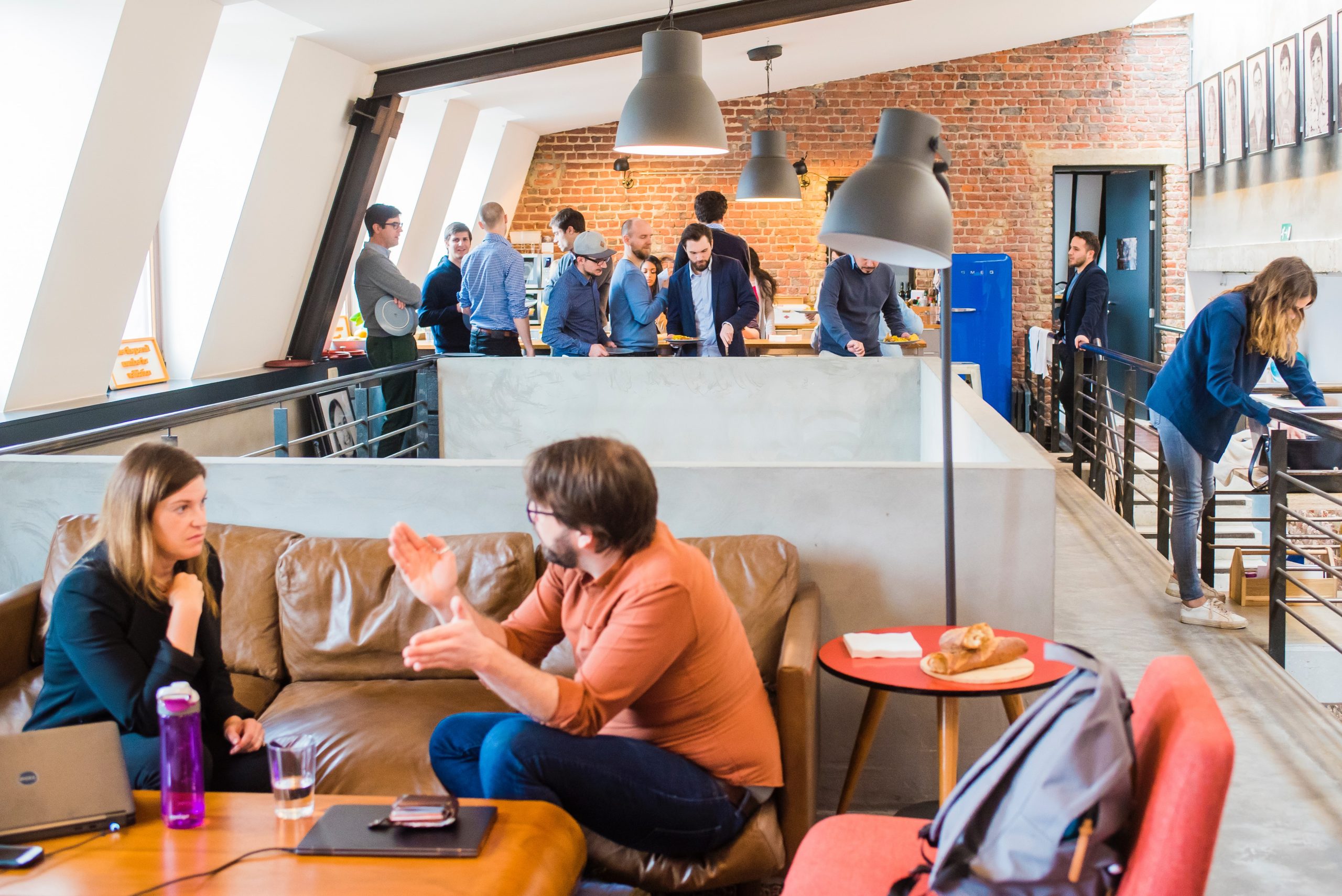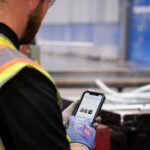The role of the workplace restaurant cannot be over-estimated in terms of its importance in bringing people back to work after pandemic, but its long-term future will be shaped by one thing: healthy, nutritious food which is served when and where customers want it.
Of course, the short-term focus also includes providing spaces which are socially distanced, hygienic and cleverly balanced to ensure employees are both safe and inspired when they eat – whether alone or together.
Salad bars and buffets have been replaced for now with pre-portioned food and more grab-and-go options. Covid-secure food preparation and service are in place and restaurants have been re-designed to accommodate one-way systems.
Moreover, technology has allowed digital menus to reduce touchpoints, touchless condiments dispensers and even ‘click and collect’ apps which enable workers to book a time slot to both pre-order and collect and, if they wish, sit and enjoy their meal. The focus needs to be on making people’s lives just that little bit easier. We’re even introducing the option for people to buy meal kits, with our Prepped range – everything they need to enjoy a quick, nutritious meal when they arrive home after a long day or even when working at home later in the week.
Businesses are realising that if they want employees back at headquarters to spark collaboration, improve morale and increase productivity, then they need to be tempted back and their mealtime, break, coffee and all-day grazing needs must be considered as a priority – not just now, but for years to come.
It is also important to note that workplace restaurants are popular and as people return to working together, businesses need to capitalise on this in order to keep employees motivated, collaborating and engaged. A survey commissioned by Compass Group earlier in 2020 showed that more than half of employees would be positively influenced to join companies that have a restaurant onsite. In fact, having access to a staff restaurant was cited as the third most important non-financial benefit to employees, only behind health insurance and flexible hours / working from home.
So, the question is: what should the future of the workplace restaurant look like?
The trends we have identified include embracing challenges thrown up by the pandemic, of course, but the deepest issues revolve around how food can inspire health, wellbeing and productivity.
These include:
Food to take your teams further
This is our customer promise and is crucial for us in setting the agenda for what a workplace restaurant should be all about in future.
The days when employees were only served up high-calorie, high-fat options are gone. These days it’s important to offer balance as well as choice. Healthy workplace eating shouldn’t be about encouraging people to diet or deny themselves certain foods. Within a nutrition-led catering offer there’s still a place for more indulgent options, perhaps focused more towards the end of the week. Overall, the focus should be on offering choices that make people feel good.
For employers, there is also a focus on serving the kind of food which can nourish teams to help them be healthier and more productive. So, it’s a win-win situation to serve fresh, seasonal ingredients which have health and wellbeing in mind. Food that provides protein, wholegrains and a lot of vegetables to go with it, to ensure the meals consumed at work are doing the best they can possibly do.
Nudging employees towards healthy choices
People really do want to be healthy, but the truth is they are struggling to achieve it.
A Mintel report in 2019 suggested six in 10 adults try to eat healthily most or all of the time – and yet around 65% of the UK population is overweight or obese. When you consider obesity is one of the key factors in terms of susceptibility to COVID-19, it becomes an even greater concern.
The good news is that workplace restaurants can play a part in helping people make healthy choices. Psychologists have told us that much of what we do is subconscious. ‘Quick decisions’ or ‘auto-responses’ shape our lives, driving our behaviours day-in and day-out, without conscious consideration. So how can we disrupt the system, interrupt behaviour patterns, and help people make better decisions?
In terms of a workplace restaurant, this may be as simple as making default options healthier, for instance by upping the plant-based content of items on the menu and cutting down on salt, sugar, fat and considering portion size.
Choice editing is another powerful tool: increasing the range of healthy options and removing the really unhealthy ones. This is especially relevant for snacks, as out-of-meal calories continue to climb.
Making nutritional advice and ingredient lists easy to understand in a workplace restaurant also allows employees to make informed choices.
Embracing food trends
Reports suggest people of every demographic are looking to eat less meat and more plant-based foods in future. The 2020 IPSOS Global Eating at Work survey that we commissioned, for instance, showed a decline in meat consumption with each new generation from a peak of 93% amongst babyboomers to 70% amongst Generation Z.
This an opportunity for workplace restaurants to add more vegetables to the menu. Our own plant-based brand, Plantilicious, has been received particularly well, and that’s interesting for the future. From January 2021, we’ll be rolling out our plant-based options every day of the week with additional nutritional criteria and benefits in every dish.
Our survey also revealed that Generation Z are more likely to graze throughout the day rather than eat a big meal. Planning a variety of menu options including hot, rustic main meals, treats and snack dishes, could be the answer here and we have adapted our menus in line with this desire.
Ethical sourcing
Employees are increasingly asking where food comes from and how it has been sourced. This is an opportunity for workplace restaurants to focus on local produce, but also to ensure that supply chains are transparent. Assessing suppliers before working with them and developing clear guidelines and standards should be common practice for the workplace restaurant of the future. We are proud to have a UK-first sourcing policy with the vast majority of our produce sourced from British suppliers.
Restaurant design as a driver for collaboration and innovation
Turning workplace restaurants into places where people can bond, innovate, and collaborate post-Covid is essential as we move forwards.
Restaurants need to look good, feel good, and be comfortable to eat, work and socialise in; meaning, to create the right ambience, their design needs to reflect the business and its employees. Lighting, décor and even the type of music played could be an influence here. Don’t forget the kitchen, either – this should be a positive and inspiring place to work in to ensure chefs are comfortable when providing delicious and nutritious food for the workforce.
Ultimately, companies need to plan carefully to secure the future of their workplace restaurants by embracing all these trends and challenges.
But, most importantly of all, don’t forget it’s all about the menu.
By Morag Freathy, Managing Director, Compass Business & Industry comprising Eurest and 14forty)









